I don’t suppose living in the Alps is that great from an Ecological perspective. Though as time goes on we are learning (actually, being slowly forced) to reduce our carbon footprint on the environment. Not many people think about this though, even with the government’s attempts to help (see the DPE labels). I’ve written about it in the past too (An Eco-Chalet in the Alps). Despite this I did have a customer say to me recently “I’m only interested in building a new place…for eco reasons”, maybe as time goes on it will happen more often? Though I’m not sure that building from scratch is that eco-friendly, despite the fact the heating bills will be less. The carbon footprint from the new materials might well outweigh the long-term benefits.
I’ve been living in my house for 14 years and have only got around to upgrading the last remaining single glazed windows this winter. It’s never been a priority for me as I’m well aware that the pay back won’t happen for 20 or more years. I took the opportunity to take some infrared pictures to show the difference before and after. It was a bit of an eye opener. Not the difference the windows made but how much heat my house is giving off!
The first photo shows my house on a cold day (-7C), the ground floor is 60cm of solid (stone and rubble) construction with no insulation. The upstairs of my property was insulated when it was renovated 30 years ago. They use hollow bricks with a small amount of mineral wool insulation stuffed between them. There is no vapour barrier and externally the walls are wood clad. The shocking thing here is the walls are 10C. The single-glazed windows are obvious on the picture and are only slightly colder (15C) than the inside temperate at the time (19C).
I live in a semi-detached house. The other side of the property is a holiday home and was unoccupied at the time. The difference between the two can be seen above and is stark.
I have a few before and after photos of my house here. The first one shows the replacement front door.
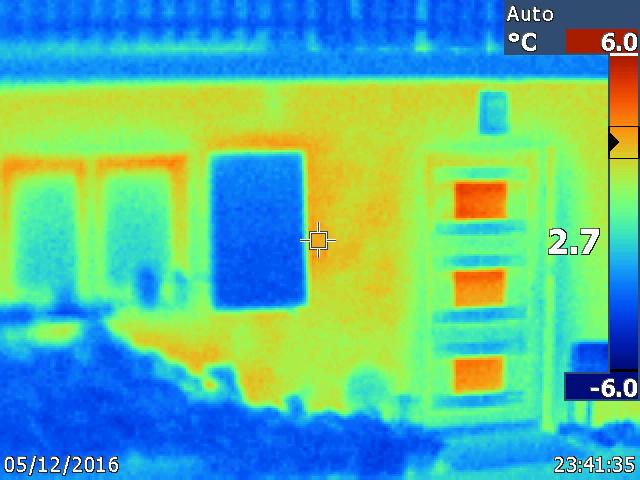
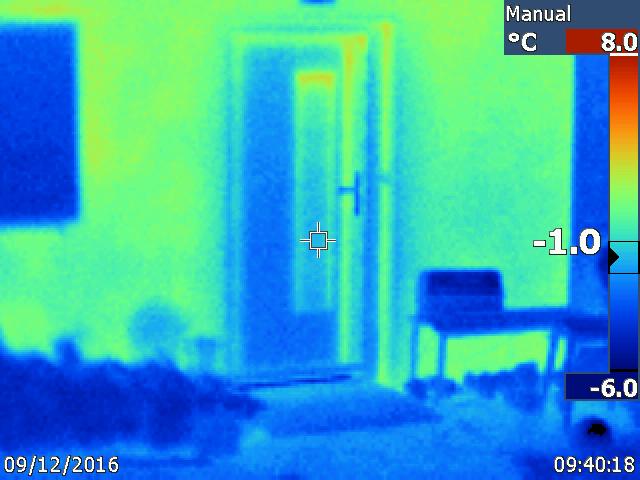
These pair show the windows before and after.
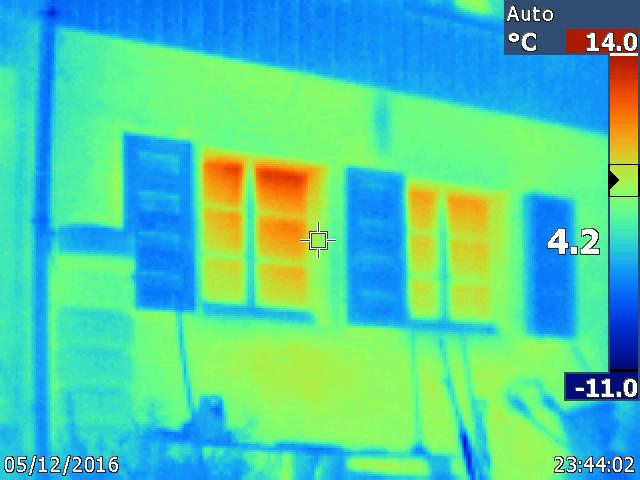
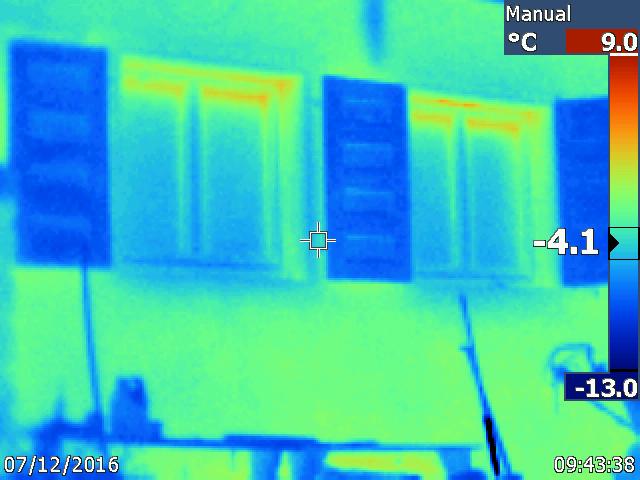
The rear of my house has been renovated by us in the last few years. We added double glazed windows, some thermal plasterboard to the internal walls and some insulation to the floor. The room was barely habitable in the winter and now it is just fine. The heater is the same size as before! The difference is obvious on this picture. The window glass is about -4C and the walls are mostly above freezing. The weak point is the window frames.
I live next to a newly built house. It’s a “kit” house which is becoming the norm around here. The structure and walls are made in a factory, the house itself is then constructed quickly on site. The difference in economy is obvious.
The outside of the house is pretty much at ambient temperature (it is not letting out any heat). There is one small issue around the garage door but that is about it! I mentioned this property in a blog I wrote a few years ago about building a chalet in the Alps. I’ve quizzed the owners of new properties like this and the energy savings are real. They are generally heated with electricity that powers an air source heat pump. The overall energy costs for a house like this are 30% of mine. So where I pay 300€/month for the heat+light for my house they pay 100€/month for the same sized building.
This traditional framed method of construction can be seen here:
A wood frame sits on top of a concrete base. The wood frame and the wall panels are made in a factory, insulation is added on site. The concrete is insulated inside and out and clad to taste. It’s an expensive and materials hungry form of construction. You can see a nice cutaway below. Stone cladding, beneath that 40cm of insulation, 40cm of concrete and some more insulation and plasterboard inside. No expense spared!
SIP Panels (Structural Insulated Panels)
I’ve mentioned these in the past. SIP’s are less materials intensive (and therefore cheaper), as well or better insulated as any alternative, quicker to construct (and therefore cheaper). I’ve noticed a few houses being constructed with these techniques around Morzine. Mostly by the aforementioned ECSUS Design using Kingspan products. In fact they have been building a number of chalets around the Haute Savoie. In the past their chalets have been quite simple. You can see an example of this on my article “how to build your own chalet” and in the video below. This doesn’t always have to be the case, as seen here …. https://www.youtube.com/chalet-build-montiond and on this new build in Morzine
Resources for renovations
Everyone knows that the first thing to insulate is your roof, after that you need to eliminate draughts. More often than not if you do a cost benefit calculation for making further improvements to a house the investment is such that any pay-back will be 10 years plus. Building costs in the Alps are such that the pay back can be even more. Here are a few UK specific resources that might help.
http://www.energysavingtrust.org.uk/home-energy-efficiency/energy-efficient-windows
http://www.energysavingtrust.org.uk/home-insulation/solid-wall
This is an interesting product for helping to insulate an older home. It’s an aerated plaster. An amazing idea from Switzerland but I fear it might be expensive.
http://www.fixit.ch/aerogel/?w=daemmputz

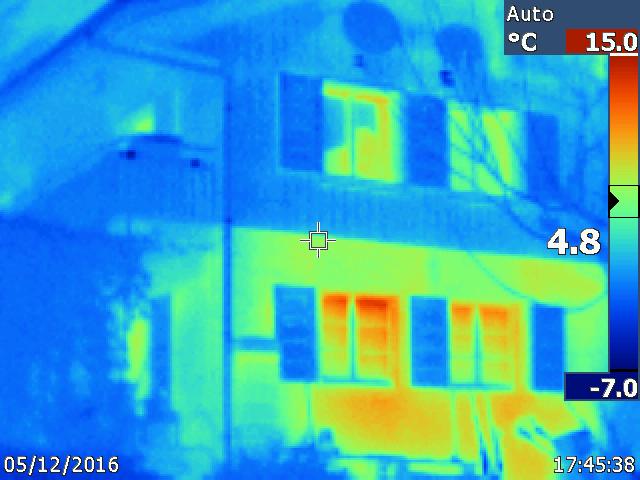
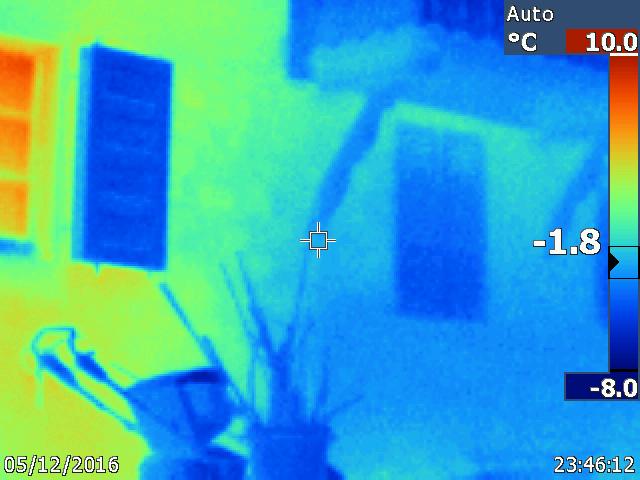


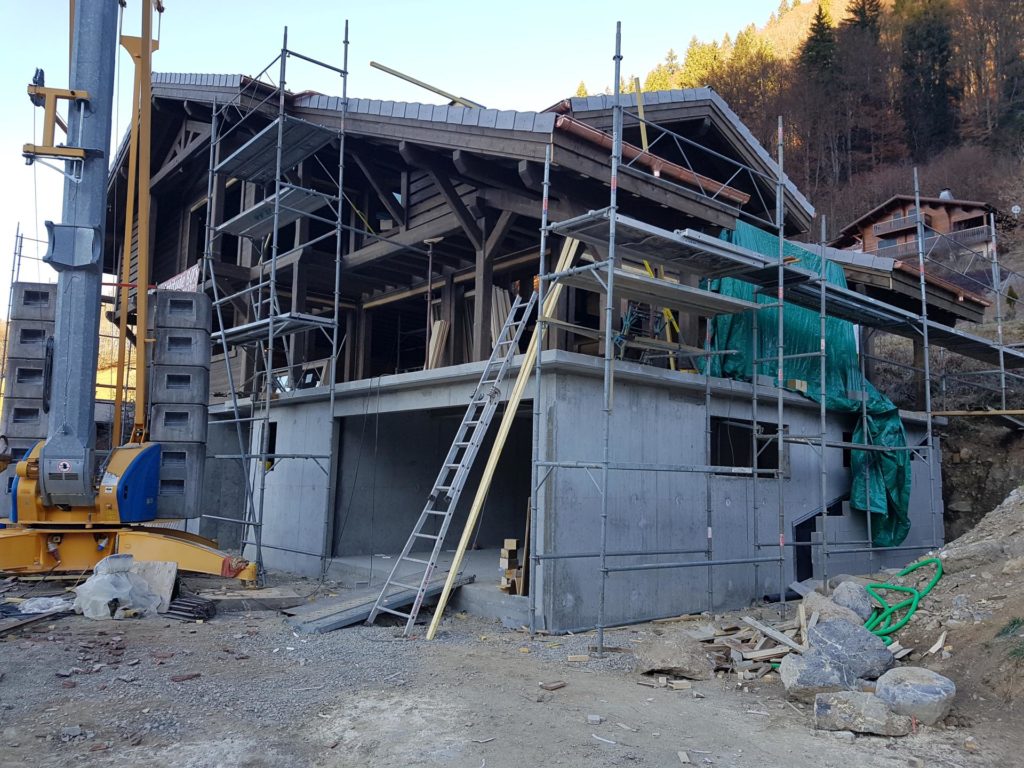
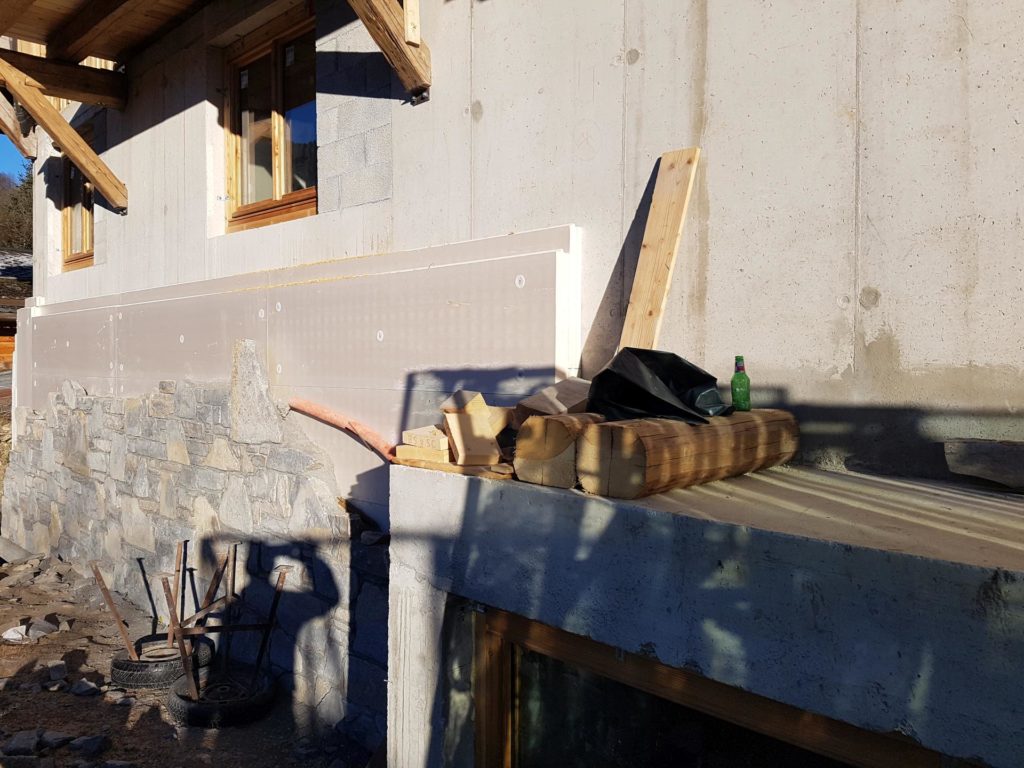


Our wooden chalet was delivered in ‘kit form’ from M. Dutruell. We have geothermal heating via two bore holes and a heat pump. Our electricity cost for our heating comes to roughly 300 euros per annum. We are on a south facing hill, so we get the sun all day which reduces heating bills.
That is a 10th of my heating bills! You have geothermal? That’s quite rare. It’s usually a ground source heat pump. How deep are the bore holes?
We’ve got two bore holes each 65 metres deep.
Wow, that is impressive. I need to add a modern, insulated, fuel efficient house to go with my eco-car. I really do.
That is a ground source heat pump, and technically speaking it’s also geothermal as you are drawing from the latent heat in the ground. There is a term “geothermal” that can relate to drawing from the increased temperature as you get closer to the earth’s core, but you’re unlikely to see any of that in the Alps for individual homes, and that is not what is being mentioned here.
Anthony, thanks for clearing that up. It is confusing, as Wikipedia attests https://en.wikipedia.org/wiki/Geothermal_heat_pump I guess a better use of the word “Geothermal” for heating would be at http://www.thermes-parc.com/les-bains/ over on the other side of the mountain.
Interesting thoughts Gareth. We’ve just finished re-insulating the roof of the older part of our house this year. Basically two attic rooms and a hall way. We tried to avoid using rigid PUR boards as much as possible though we couldn’t avoid it in the combed ceilings due to restricted space and needed the high thermal resistivity. Elsewhere we used sheepswool and wood fibre (homotherm) insulation. One factor that I don’t think is much considered is the environmental impact of the insulation itself. PUR (Kingspan / Celotex etc) is basically blown / foamed plastic. When cut, it generates a LOT of tiny bits of plastic dust – devastating for the environment, where much of it will eventually end up in the sea. If I ever build from scratch I’ll make a point of not using it. Awful stuff. We also used a little bit of aerogel (the stuff that’s in that insulating plaster) here and there where we needed to, but it must be something like 10x the price of PUR!
It’s a shame the aerogel is so expensive. For renovating/insulating a solid walled house like mine I think it sounds ideal. As far as the impact of plastic dust goes, I take your point. Though I assume there is little cutting that needs to be done on site for a new build. I am going to visit a couple of SIP built houses next week and will raise the question with the architect. It just shows how complicated being truly green is!
I wish that were the case i.e. little cutting. But even with a bog standard (UK) stud wall construction where the standard distance between stud centres is 600mm then you’re still going to make at least one cut per 1200mm wide sheet. And that generates a lot of waste. And then there are all the little intricate bits of framing to have to fill…
For the UK market Ty Mawr are very helpful and have a decent range of eco insulations. Grab a cuppa…
Maybe SIPS are better when it comes to reducing waste?
That’s the thing with SIPS, take a look at the video. It is the wall, it all arrives pre-cut and slots into place.
I was shown around the two projects by Ecsus Design this morning. I raised the question about the polystyrene waste, I could not see any dust, I did find one piece of SIPS panel that had been cut out for a waste pipe.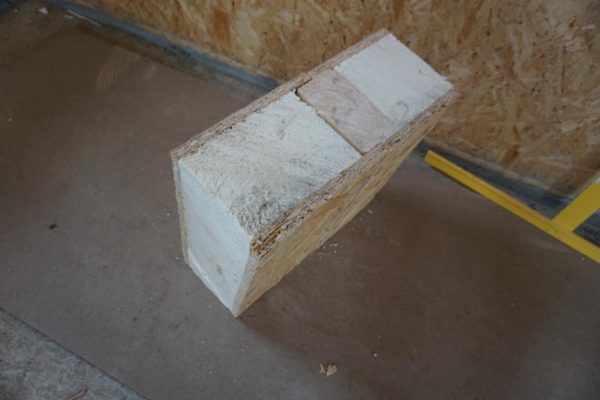 and the architect told me that the only waste that had gone to the tip so far had been the plastic that covered the deliveries.
and the architect told me that the only waste that had gone to the tip so far had been the plastic that covered the deliveries.
It’s really nice to see that there are someone that cares about eco friendly building in the alps. One wonderful day I’ll be able to do that to my own place.
But for now I’m in a rental. And I swear half of our heating (electric) goes straight out the windows, literarily. We’re paying 2-300€/month to EDF in winter for a 60m2 groundfloor apartment, and it’s not even that warm inside 🙁
So I’m curious about how you took the infrared pictures, I assume you need a special camera? Is that expensive, or something that I could assume to borrow from builders? (I know a lot of builders where I live in Chamonix)
I’m not even sure what I’d do once I’ve got the pictures, but it would be interesting to see at least.
That is a high EDF bill for an apartment. We pay 300€ a month (all year) for heating, hot water etc for a family of 5 in a 120m2 80’s renovated semi-detached building, the neighbours are never there either. The camera is special and was borrowed from a friend. An electrician might have one but it is quite rare. I think a new one costs between 2-3000€, in fact you can Google it, it’s like a Fluke FLK-Ti9. However I think your best option could be one of these. http://www.flir.com/flirone/ios-android/
Eco building in Houston Texas from what I have heard from some builders is a matter of cost effectiveness. Many people want it, like solar for example, but when it comes down to signing they almost always go for the more cost effective solution or where there is more value.
It’s true, most people make their design decisions based on cost!
Pingback: Guest Blog: Our Experience Building With ECSUS Design - Ecsus Design
Pingback: Building A SIP House With ECSUS Design - Our Experience - Ecsus Design